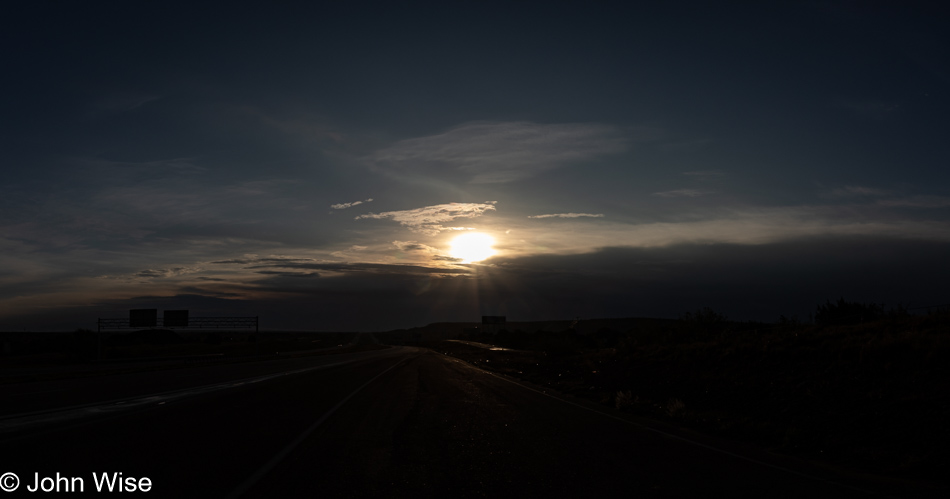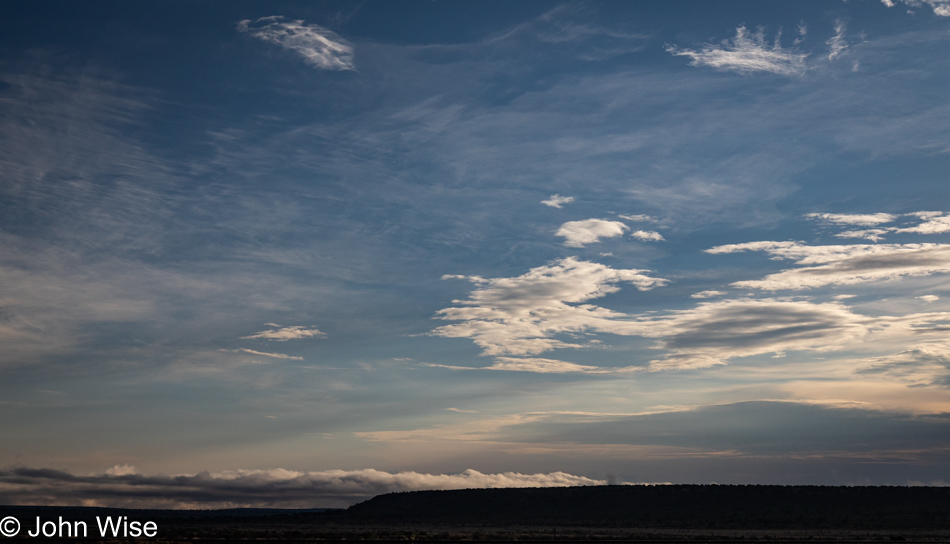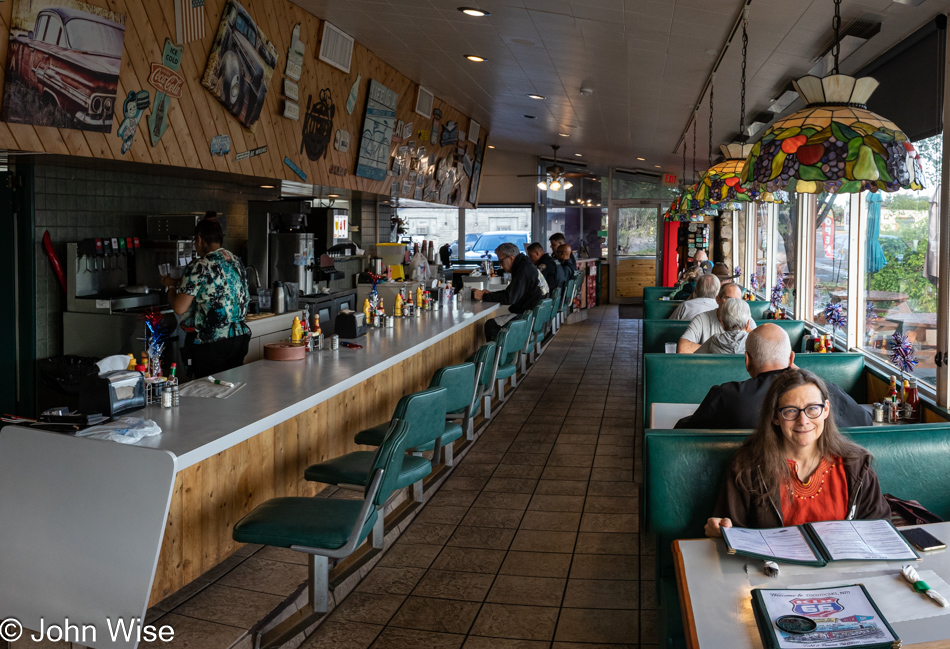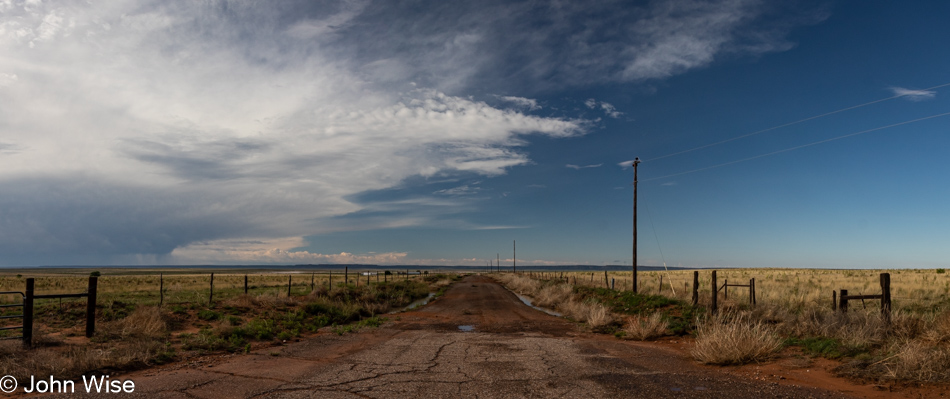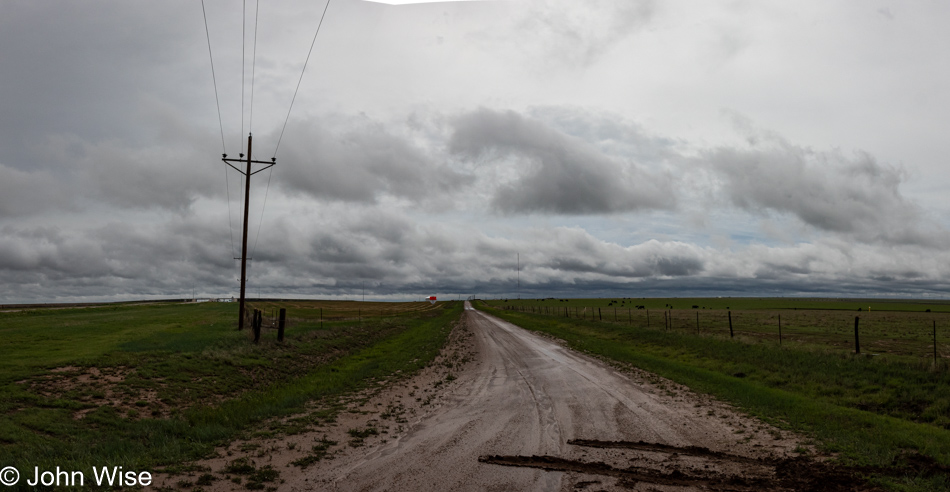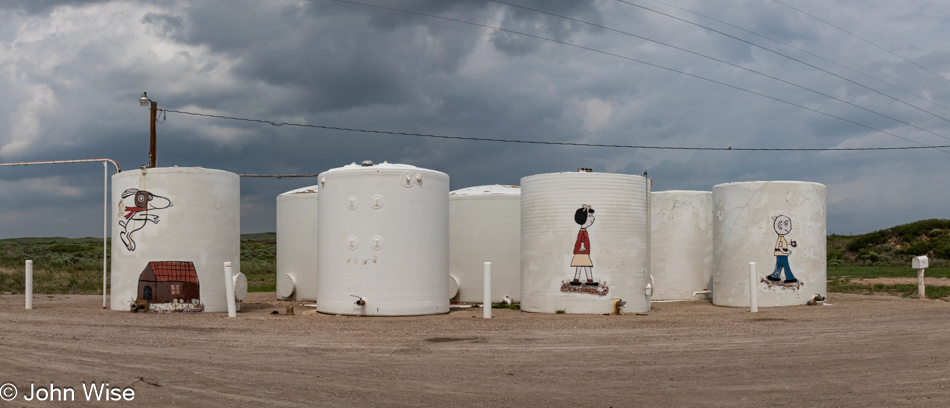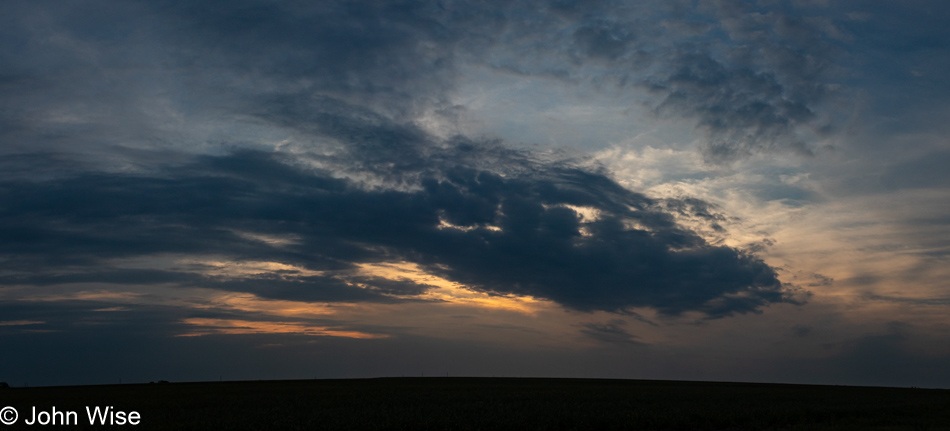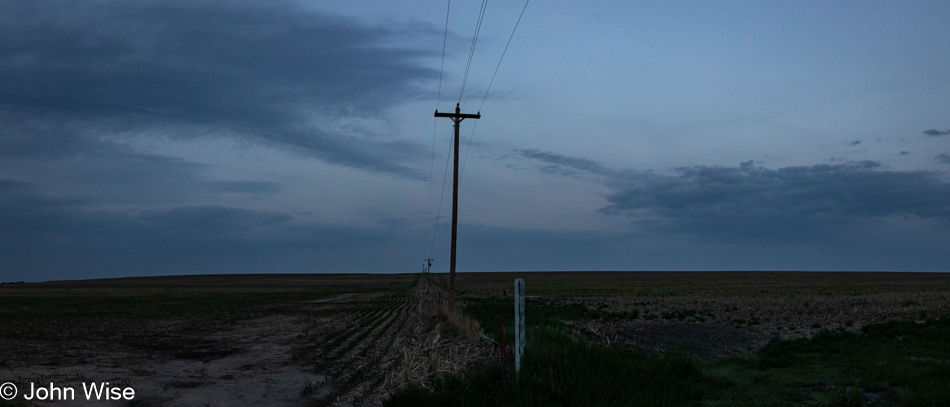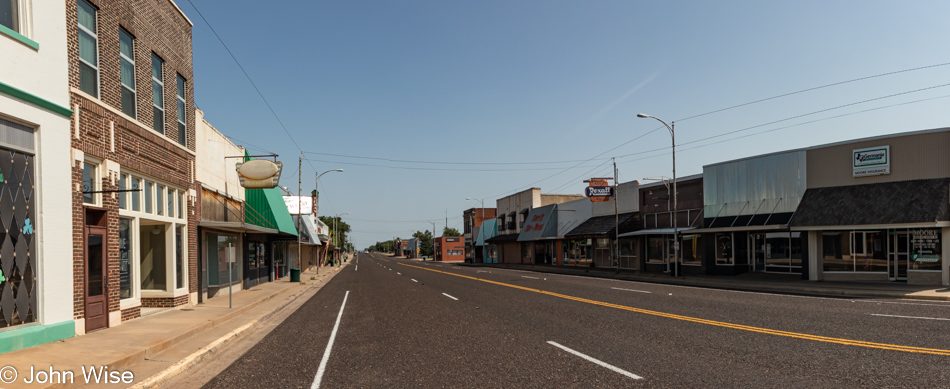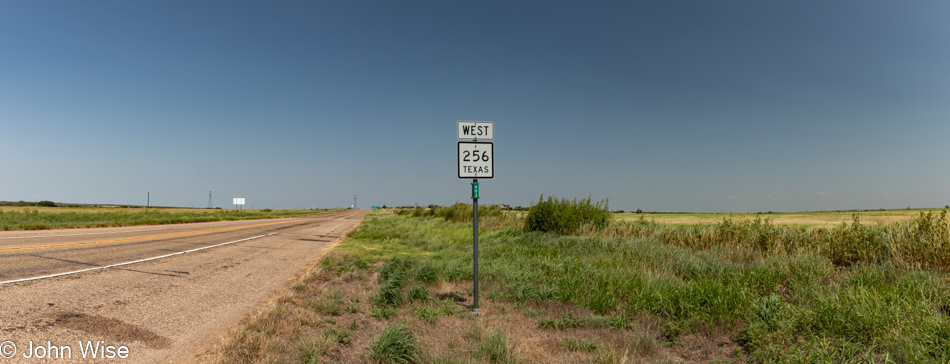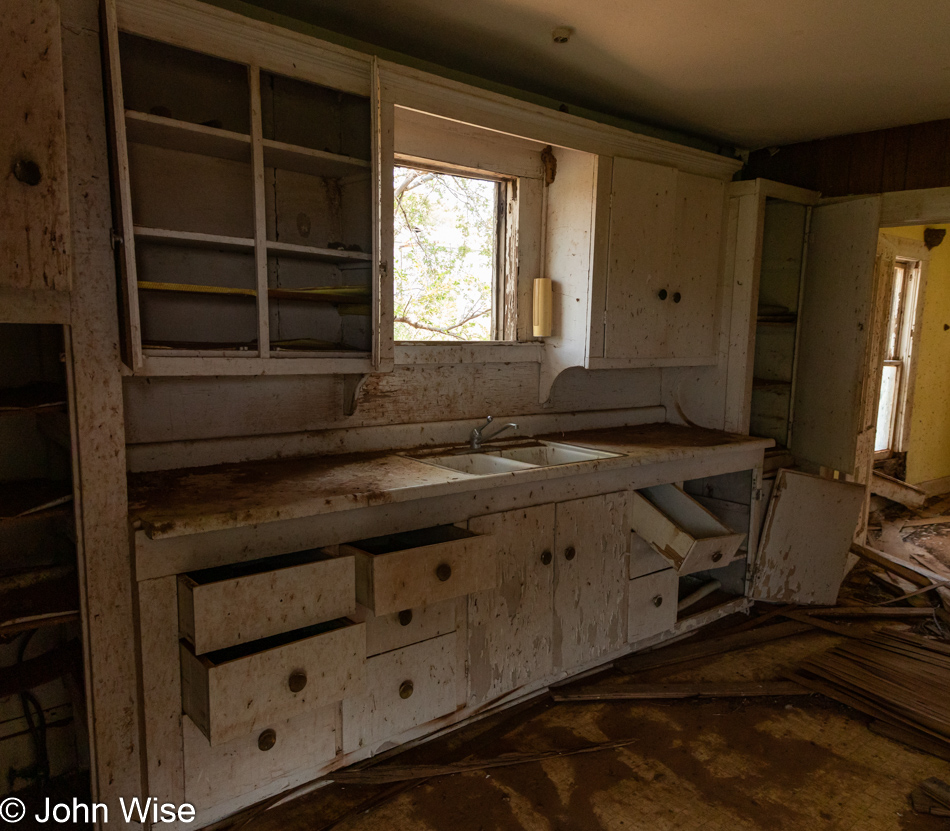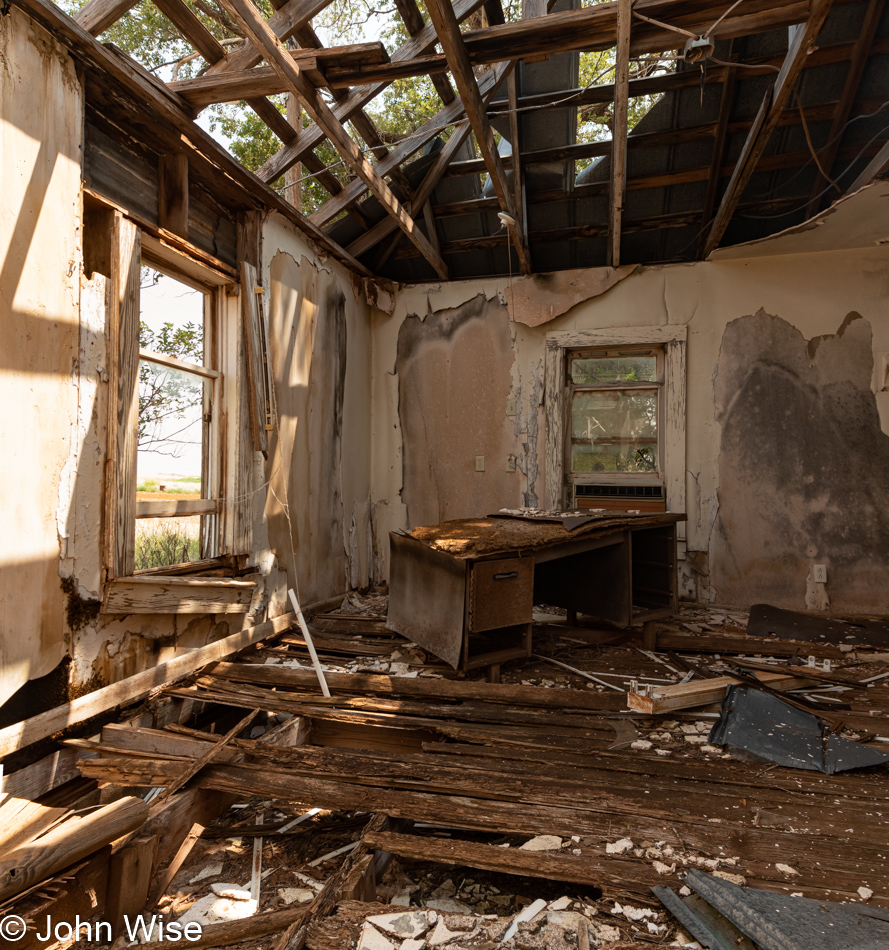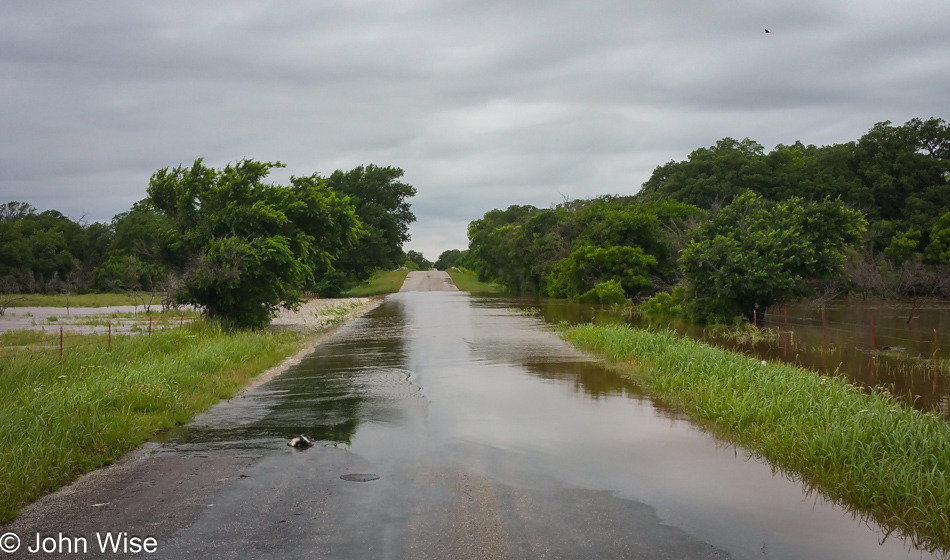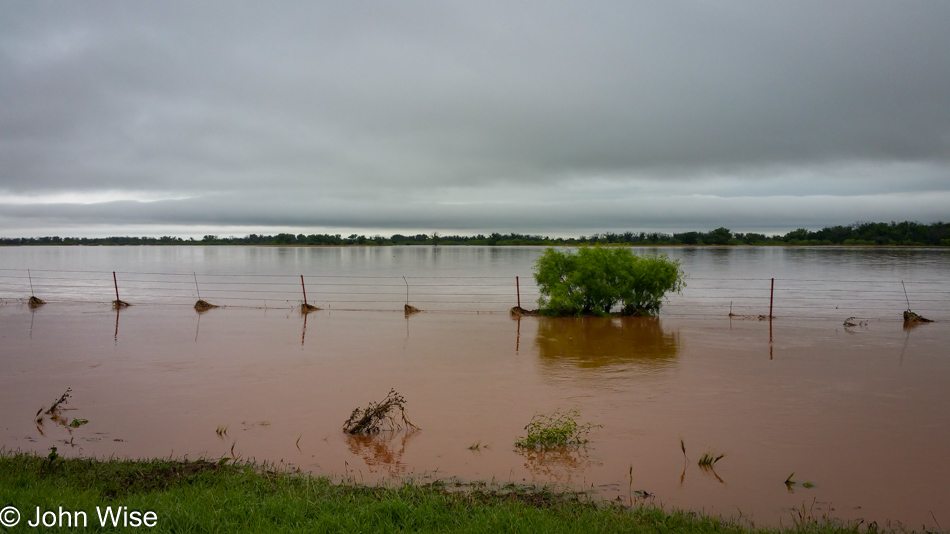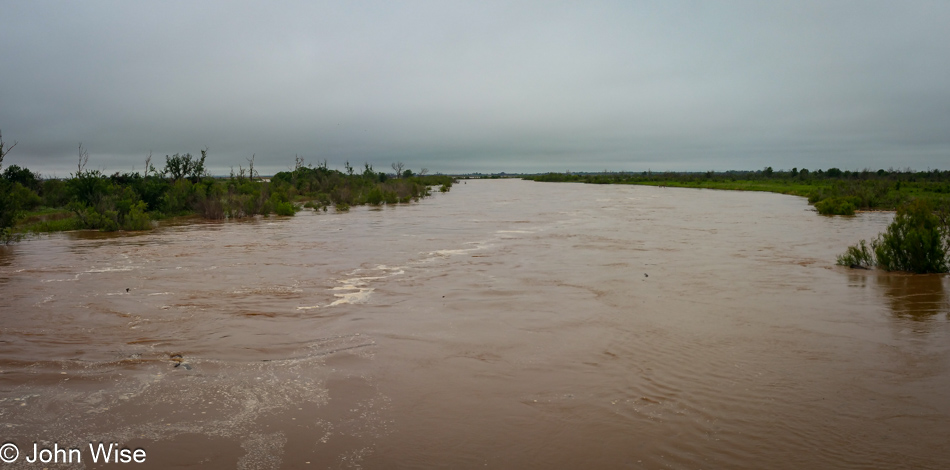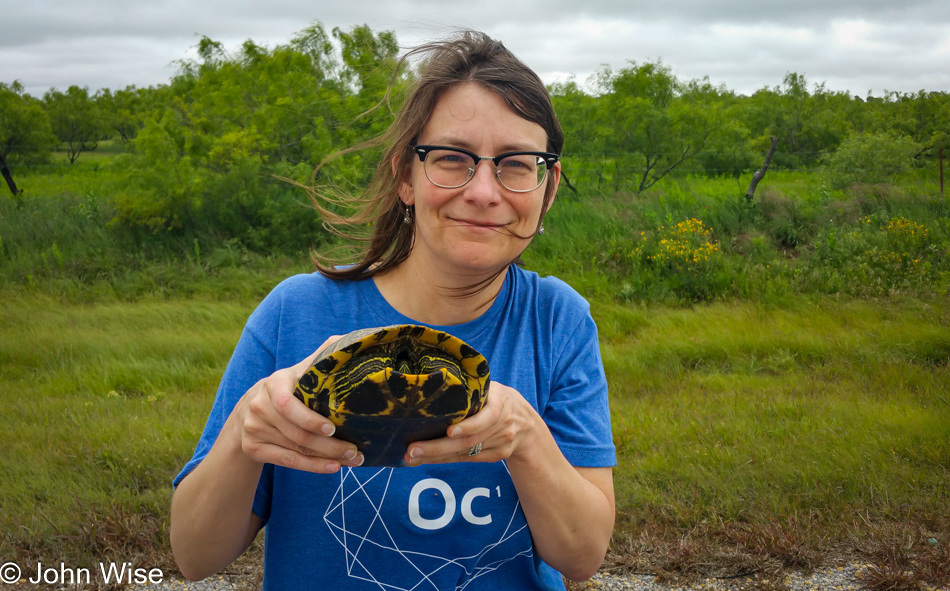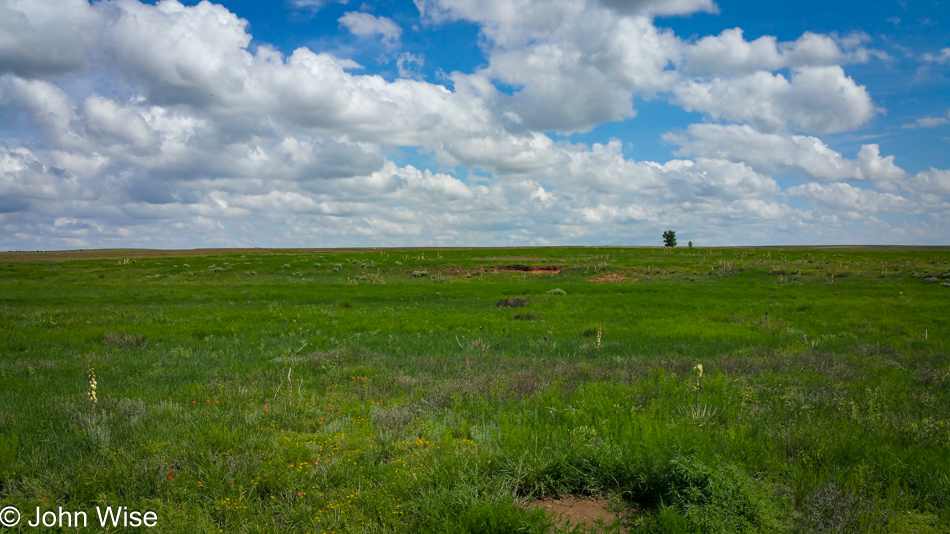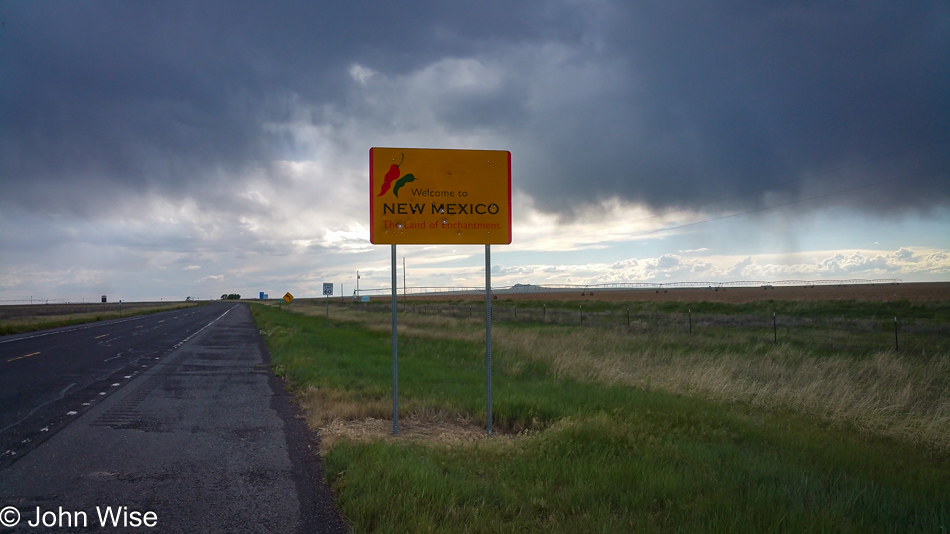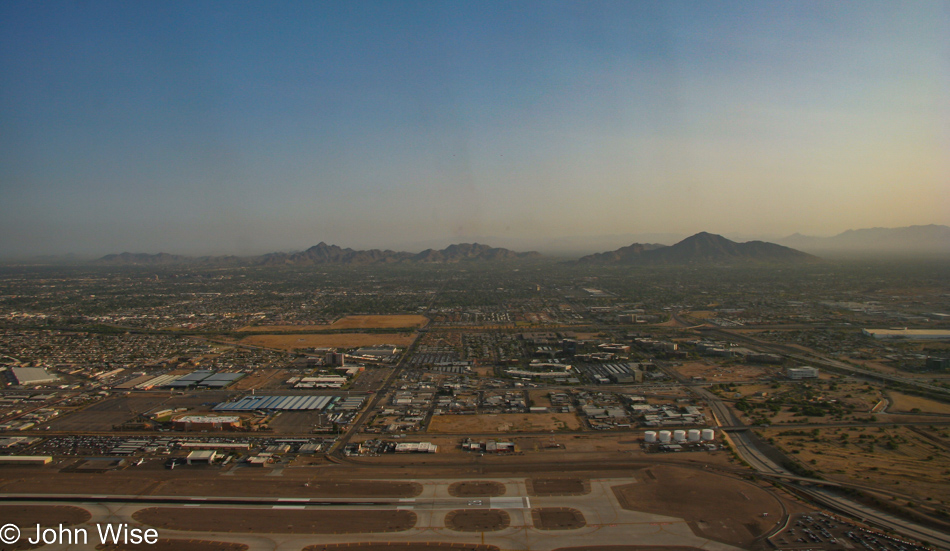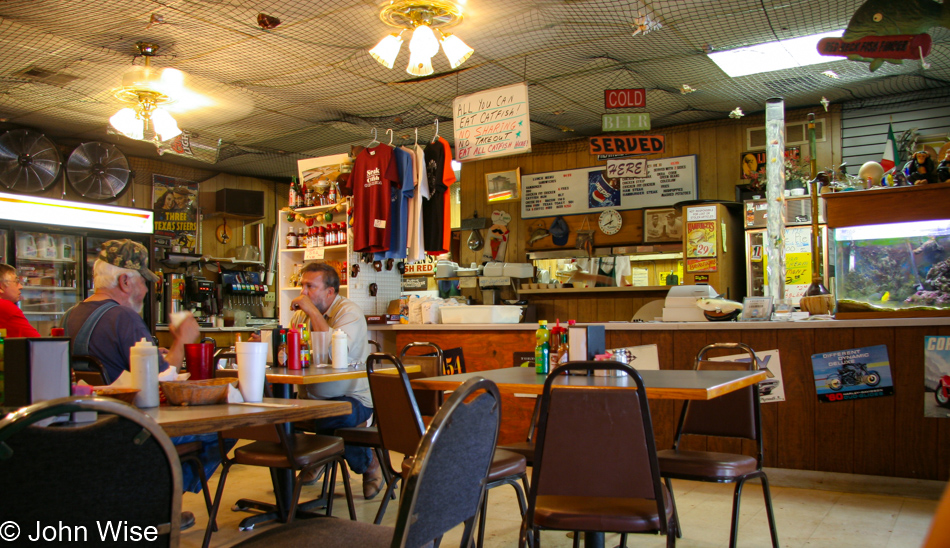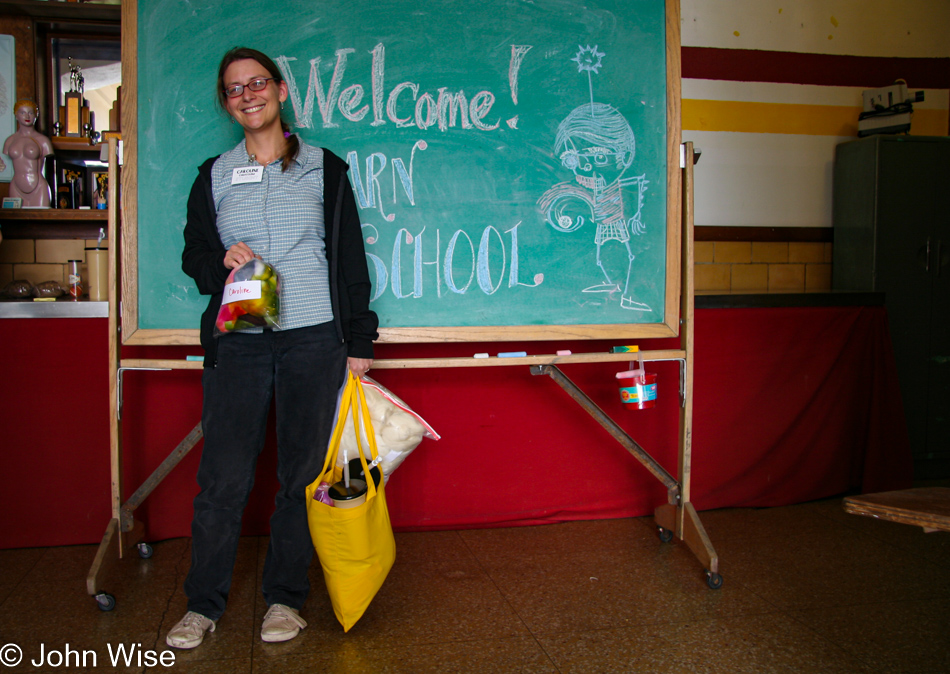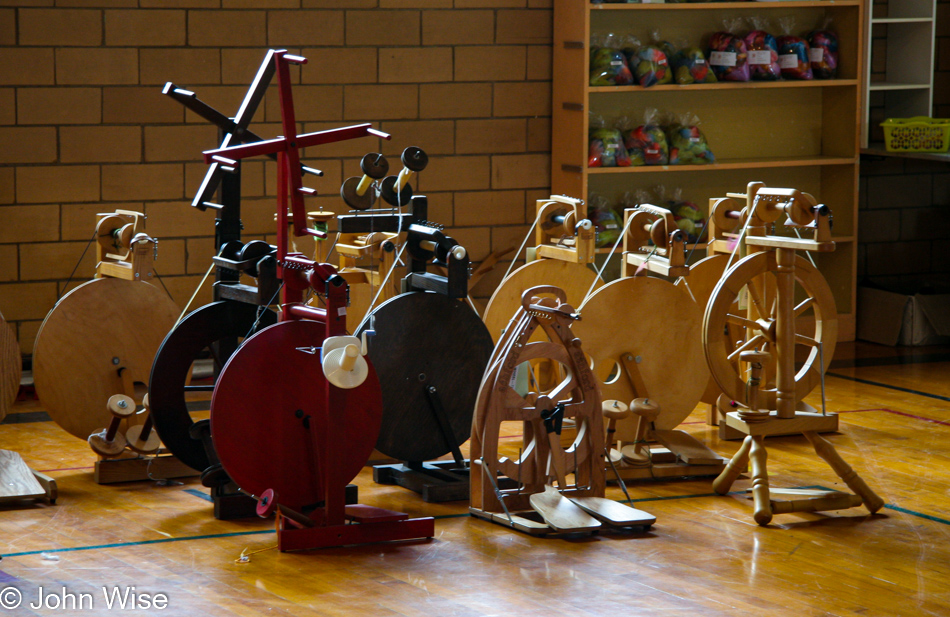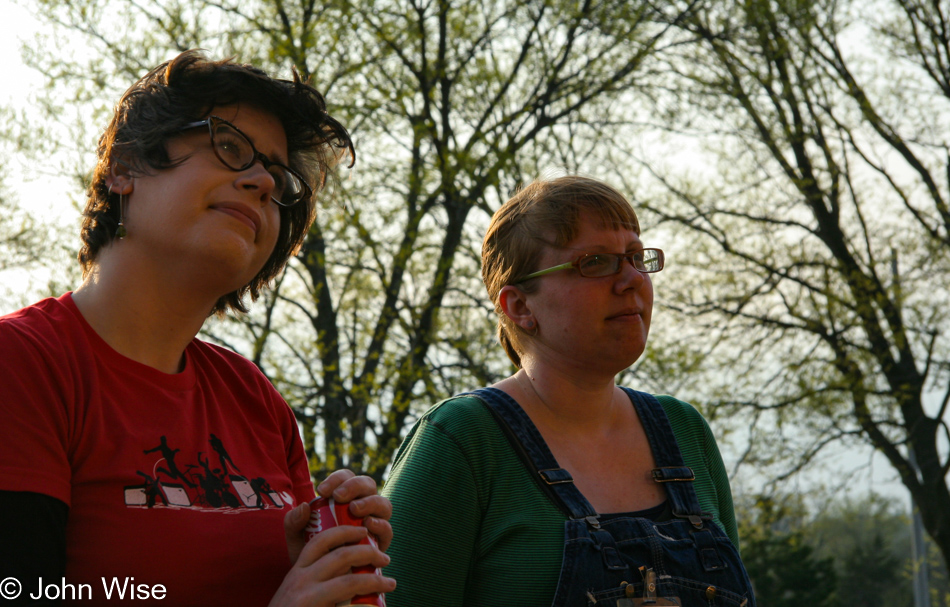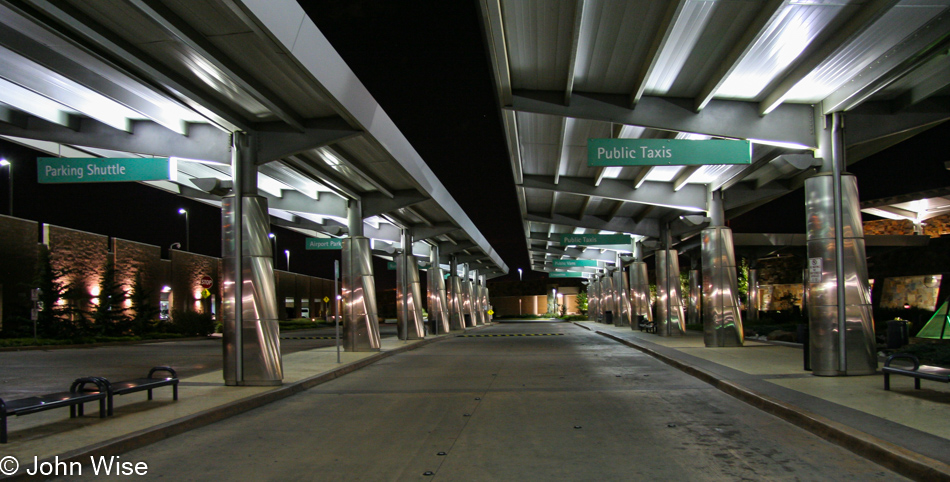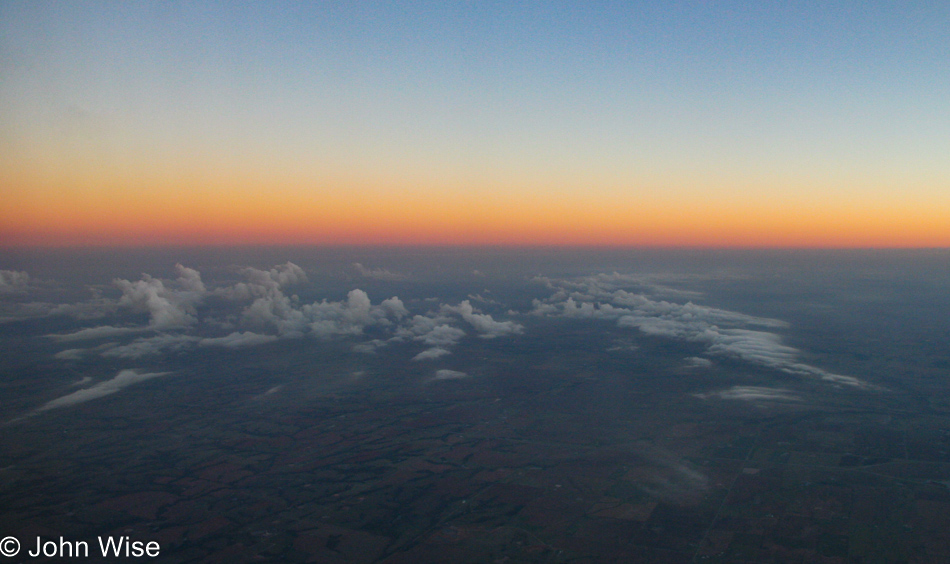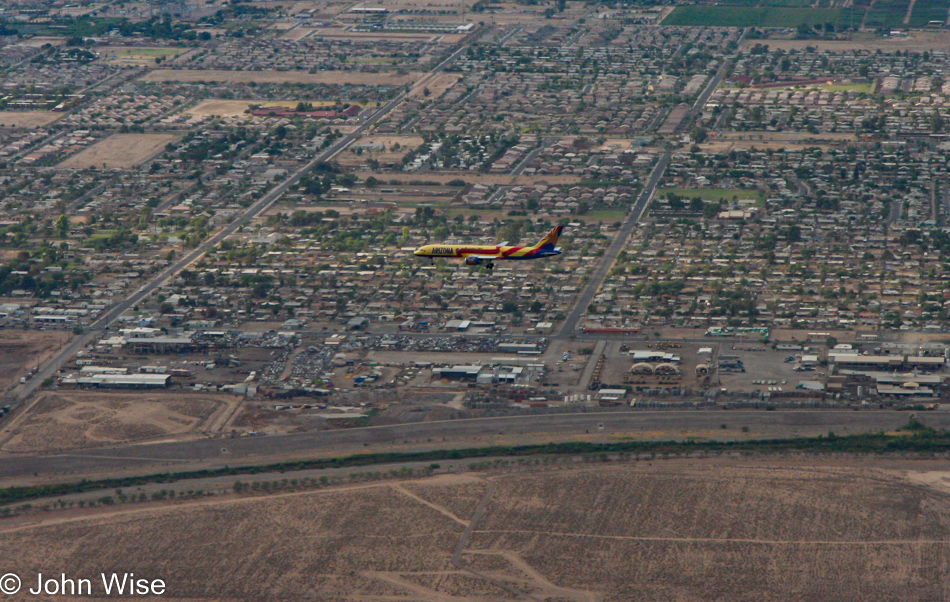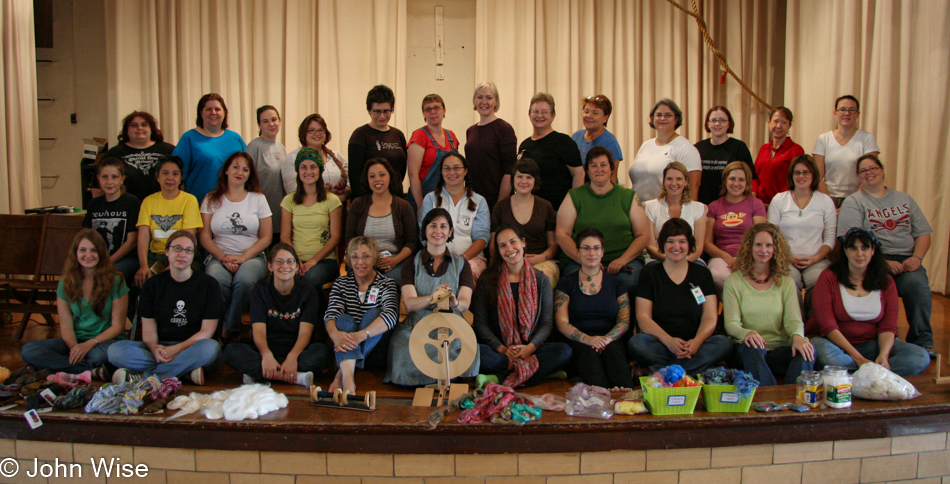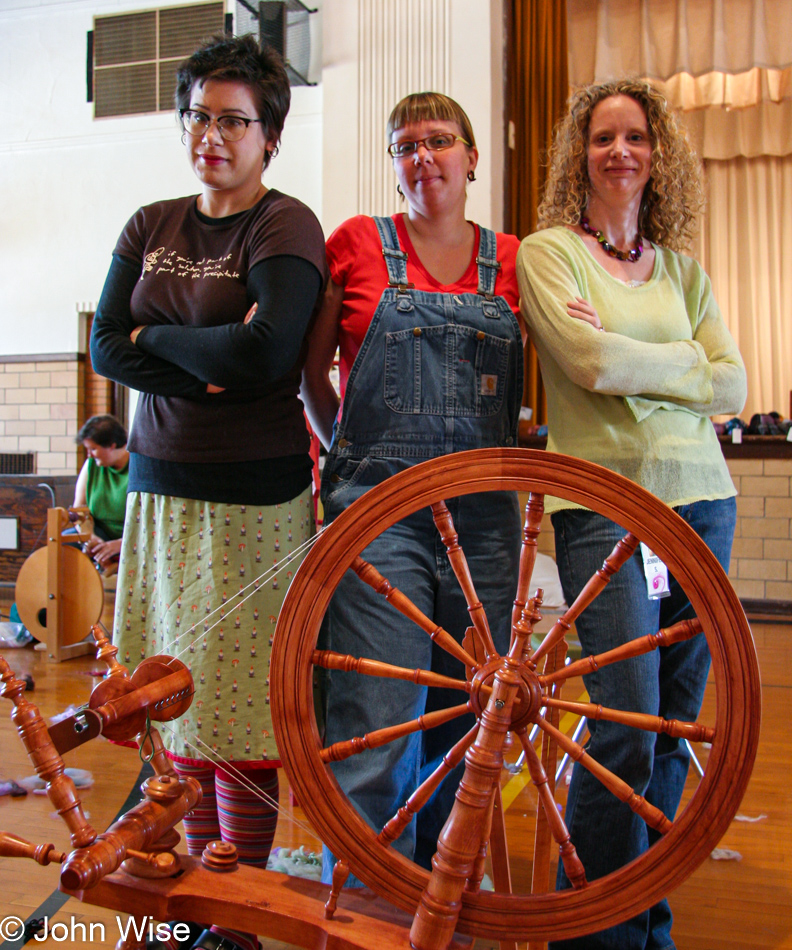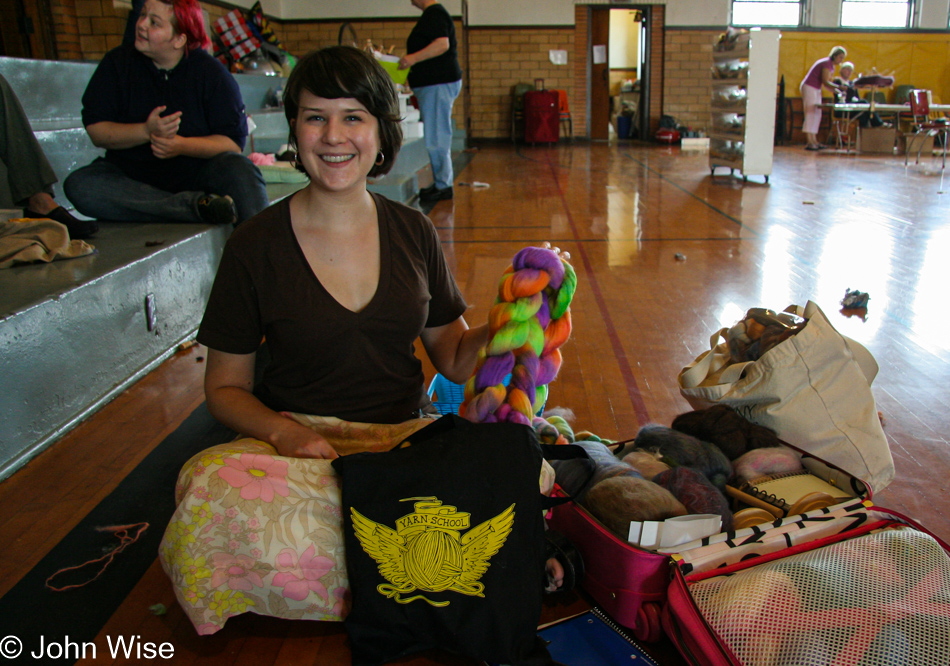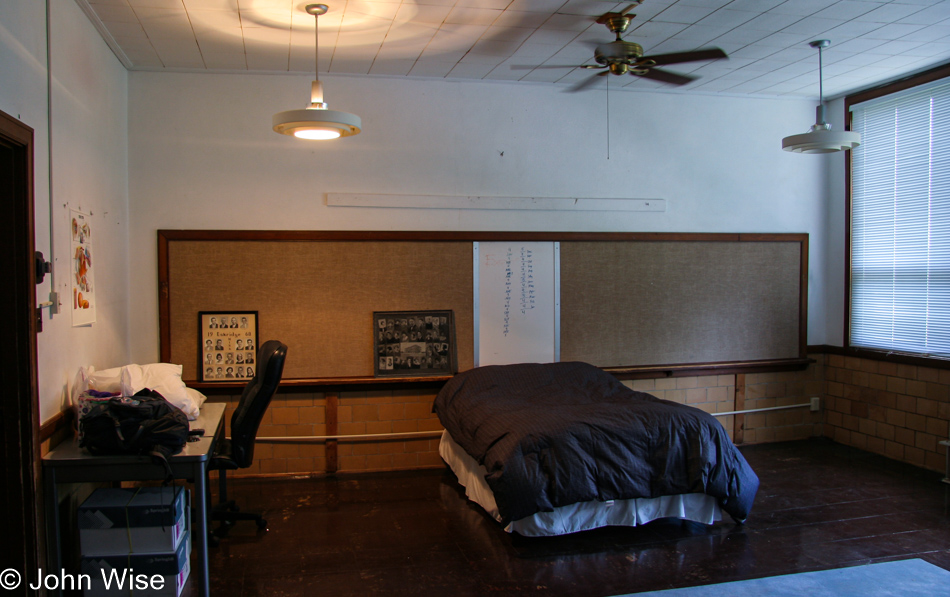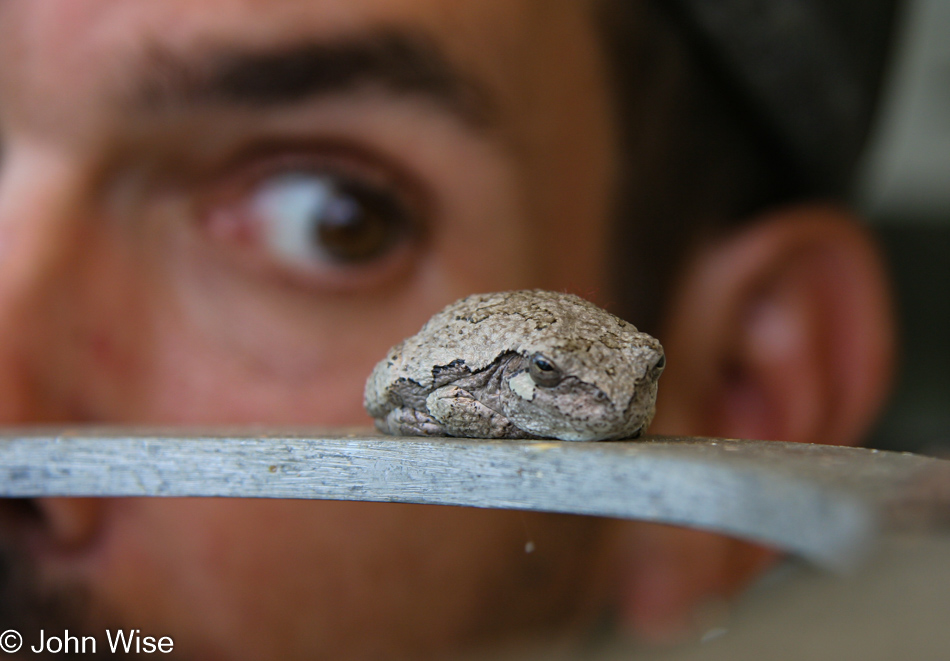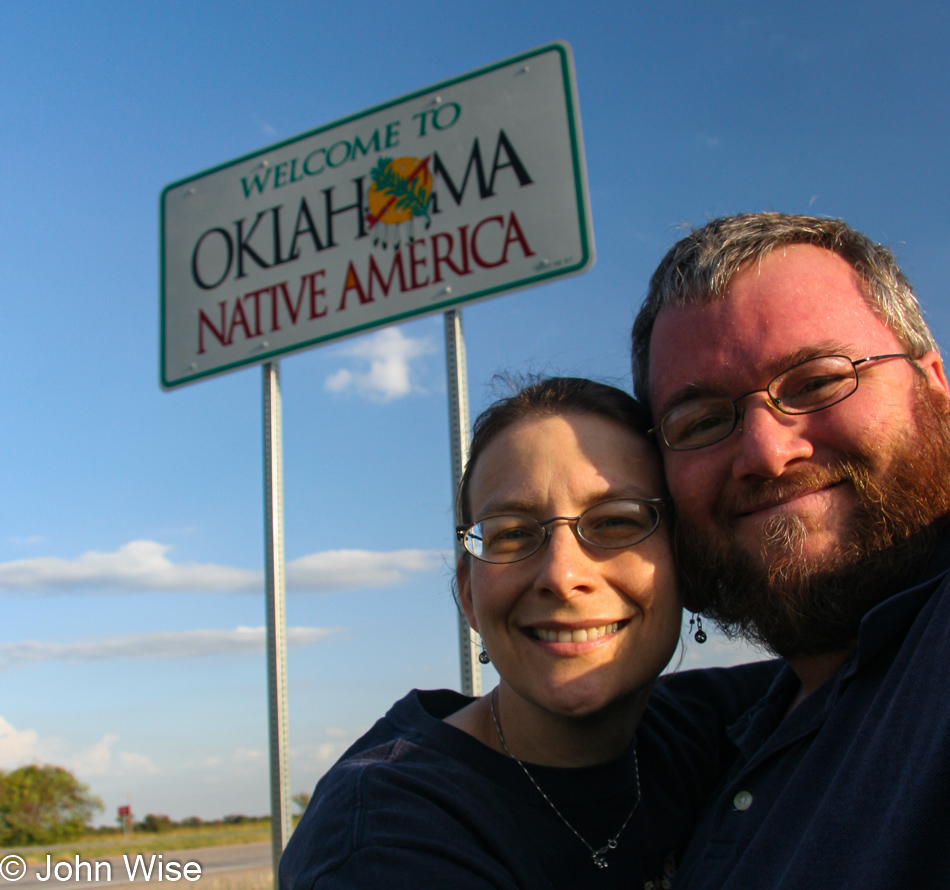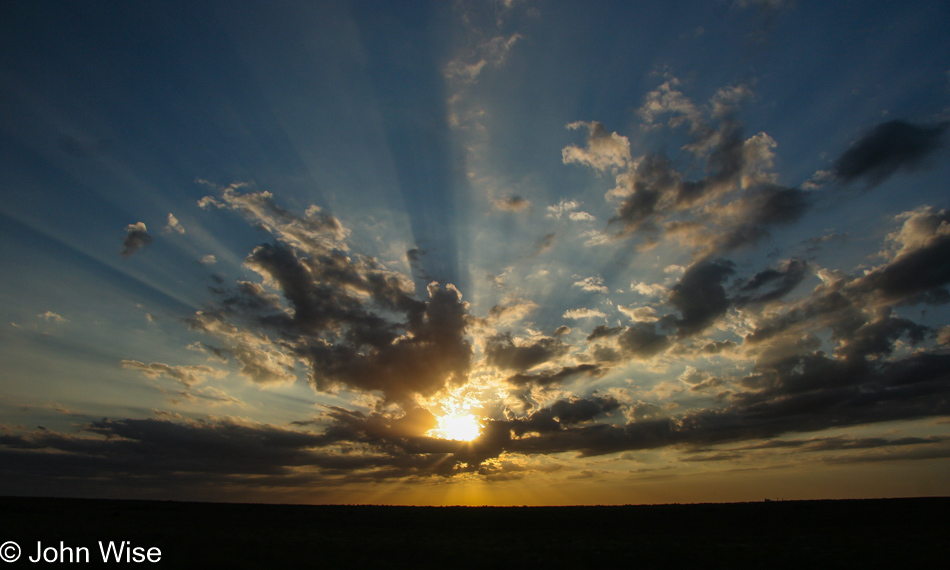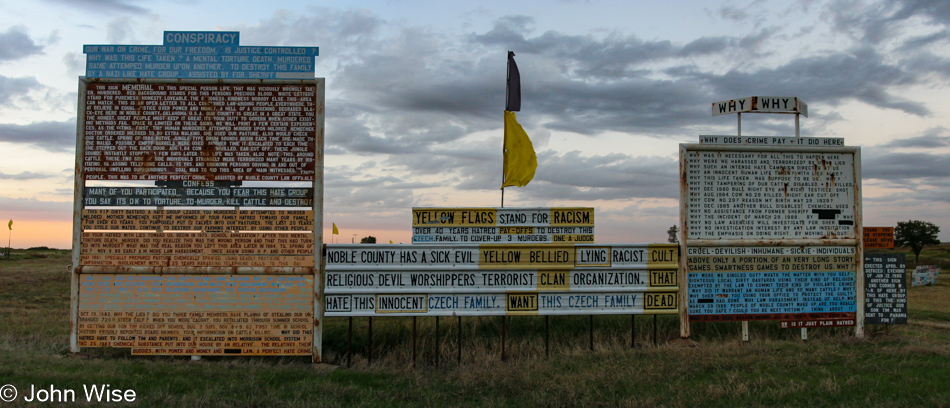
I think it was 5:15 when we woke, and I’m pretty sure we were in the car just after 5:30ish, but we were not about to go south yet. We had to double back on U.S. Route 83 North over the freeway because Penny’s Diner is just on the other side from where we spent the night. As we were sitting there having breakfast, Caroline was puzzling over the idea that the place felt familiar, and then it came to her: we ate at Penny’s Diner in Milford, Utah, last year on our way to Great Basin National Park.
Were we in that diner for even 30 minutes? It was still a bit dark when we left, but hints of daylight were coming through the early morning murk. It would take a short while to realize it wasn’t clouds but fog surrounding us.

Driving at 112 mph (180 km/h) through the fog, we are counting on the road being as quiet as it was yesterday, and since we didn’t see a single policeman the day before, what would be the chances of seeing one now? Just kidding, I was too nervous that one of those giant farm tractors that lumber down the road could be crawling ahead of us, and then there are those seriously large loads where crews are moving the pieces of wind turbines into place. Nope, no speeding here, just calm cruising into the gray unknown.

It could have remained foggy all morning, and that might have been delightful, though the photos would have suffered. Then again, that could have been a good thing, considering that we are still 1,200 miles (1,930 km) from home, but we didn’t come all the way out here to see it slip by too quickly.

Living in the Phoenix area of Arizona, it’s easy to forget that other places have weather. I understand that readers might think I’m being tongue-in-cheek with such a statement, but as I’ve said before, it’s a rare day in the desert that we don’t see at least some small patch of blue sky, and I know that isn’t very common elsewhere. Likely due to the rarity of inclement weather, we dwellers from the Valley of the Sun have a romanticized view of what others seem to use as a basis for lamentation. Should you sense some contradiction, you’d be correct; I only like poor weather when it’s not conflicting with taking memorable photos.

Take this photo here. Would it be so happy if it weren’t for the wind and sunshine? Of course, the smiles of the couple featured add to the sense that something is found here that is full of love.
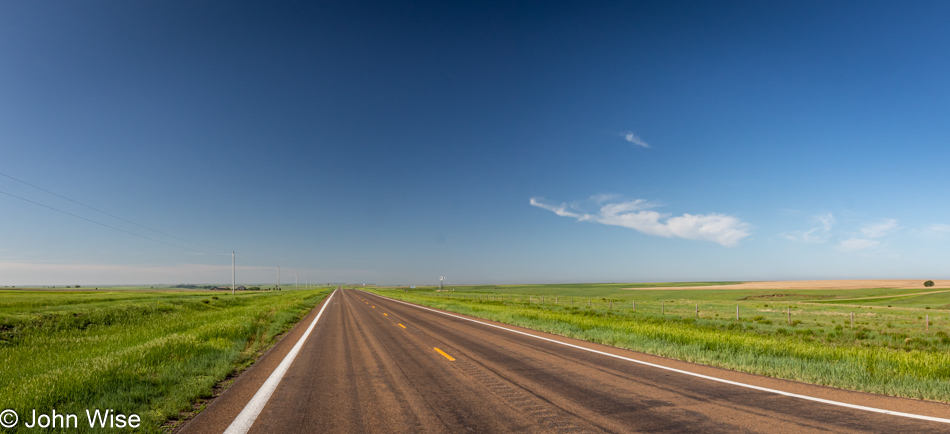
There is a kind of sadness out on the Great Plains when you realize it was turned into “The Flyover States.” A vast sea of monotonous boredom is all that might be found in this open expanse was what I learned and what others have shared over the years. This poor image was likely cultivated by Madison Avenue and Hollywood in order to help drive tourism to the two coasts of America to better serve New York City, Florida, and California as the destination with the greatest value. This disparagement of advertising was to the detriment of creating a viable tourism industry in the middle of America.
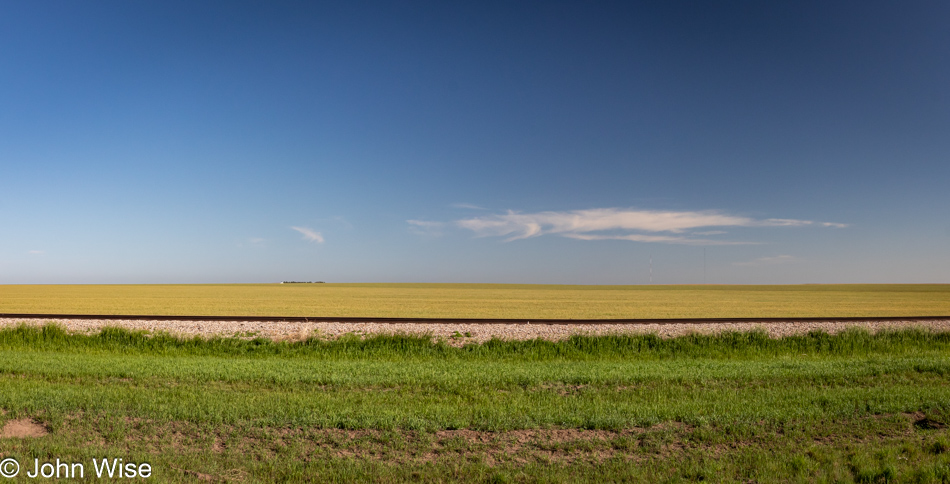
The services out here only serve a perfunctory role for those requiring absolute utility. The quaint diner, bike trails across the prairie, a slow luxury train crawling over the landscape, a weekend barn stay, and an emphasis on wildlife refuges are the things sorely missing. Dreamy experiences are only manufactured in our metropolitan areas, beaches, and lakes.
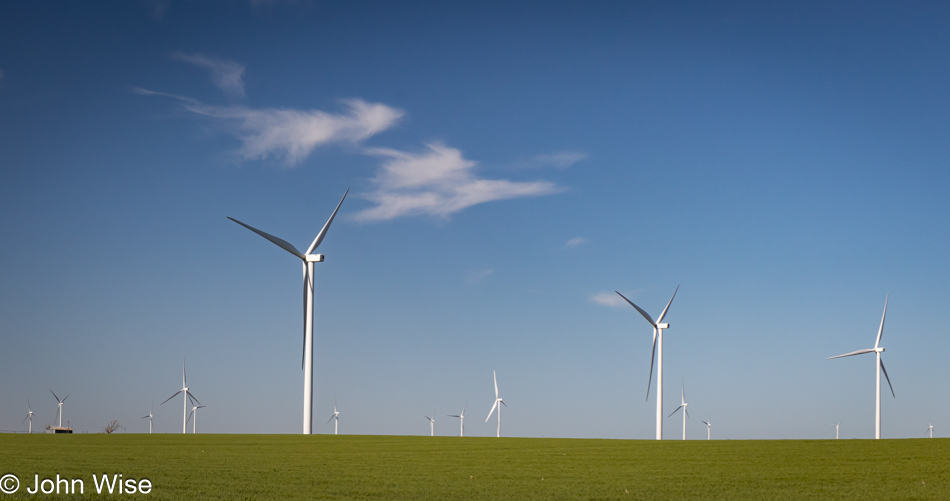
Out here on the Great Plains, you must engage your senses and plumb your imagination as trophies are not presented as self-evident iconic architecture and characters.
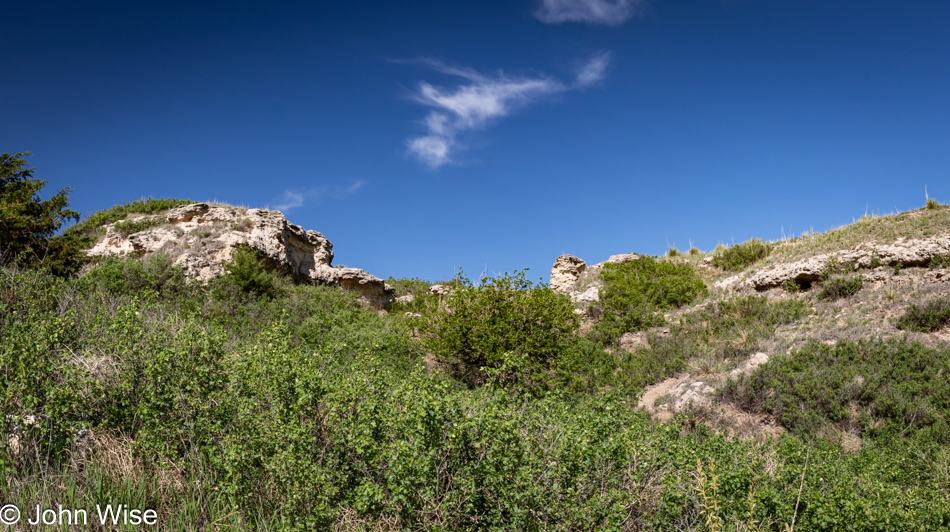
Whoa, exposed rocks in Kansas, I had no idea! Out here on these small roads, there’s an opportunity in the randomness of things that might catch your eye where we can allow ourselves the indulgence of pulling over and enjoying the moment. That spontaneity to find serendipity is lost on the interstate, where you are forced to conform in order to survive.

Wheat, this is exactly what you’d expect to see out here. You should also expect to listen to an incredible soundscape with the prairie abuzz as nature reawakens to the activity of bugs and birds. From hilly areas, sounds bounce around to these relatively flat expanses of the plains where bird calls, insects, and the wind change the entire orchestration of nature’s symphony. This part of our experience in the middle of America is nothing less than inspirational.
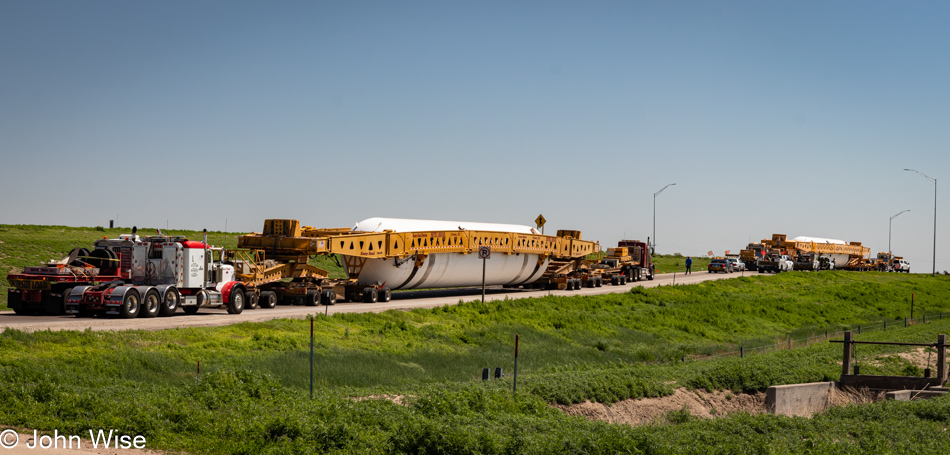
Just as we were about to pass through Garden City, Kansas, we encountered these behemoths convening on the ramp to U.S. Route 400. I believe I’ve seen these types of tanks on feedlots, or maybe they are used for water, but my sleuthing skills are coming up short. All the same, they are amazing in their gargantuan size, as is being here to see a small part of the logistics of moving such pieces of equipment.

Finding out more about this giant roadside golf ball north of Sublette, Kansas, required turning to artificial intelligence as traditional search engine results or searching by image just weren’t doing it. Finally, reluctantly using Google’s Bard, I was able to learn that this FAA (Federal Aviation Administration)-operated radar station is used primarily for air traffic monitoring and secondarily for weather tracking.
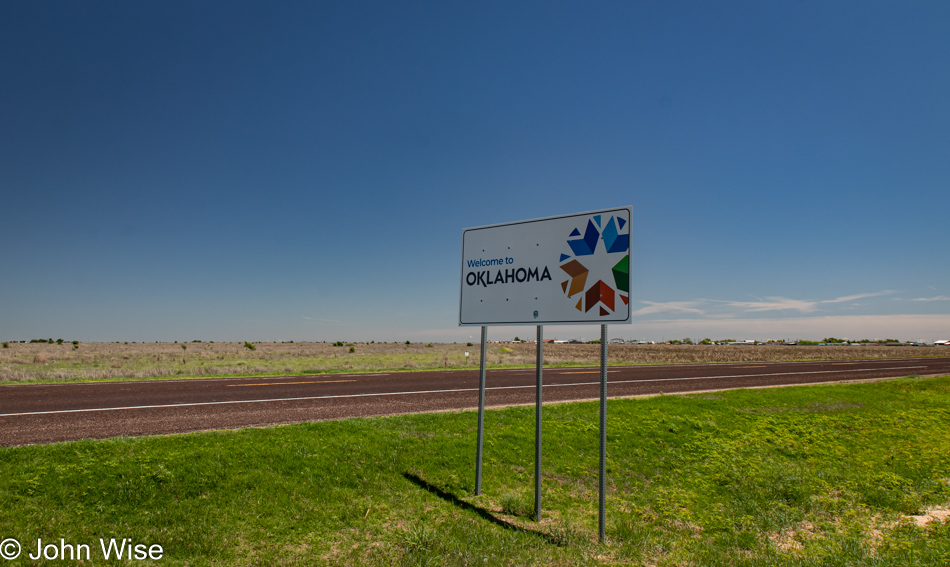
Only 36 miles of Oklahoma ahead of us on this narrow strip of the state.

There, did you see it? That was Oklahoma.

Hello, little Dermacentor variabilis, also known as the American dog tick or wood tick. Only strings of expletives are worthy to describe these damned demons that shove something called a hypostome through the skin, which is described as a harpoon-like doubled-edged barbed sword and is the mechanism that makes it so difficult to dislodge them. Needless to say, we are not fans, and after having one embedded in my leg last year for the better part of a morning and afternoon, I never want another one, as the hole it created took weeks to heal. I think this was the third tick we found during our trek into the Great Ticky Plains.

Welcome to Texas, where you are told to drive friendly, and maybe it’s just implied that you are supposed to shoot with deadly accuracy. To be fair, Texas has only had 18 mass shootings in the past ten years, hardly any at all, and only 154 people died. Don’t get stupid asking about how many were injured; they don’t count in Texas. By the way, there were supposedly 40 other mass shootings in Texas over this period of time, but they don’t have Wikipedia articles, so they don’t rise to be noteworthy and should be ignored. Finally, don’t go thinking that Texas is some kind of leader in mass shootings, as Illinois holds that distinction, with Texas being second. To you busybodies whose curiosity is getting the best of you, let me just go ahead and satisfy your curiosity now so you need not leave my site to learn the stats. Those 58 mass shootings saw 368 people killed and 1,217 injured, like I told you, hardly any at all.

Coming into Perryton, the first town you reach on U.S. Route 83 as you enter Texas, you are presented with this great mural, but before you leave town, you get to see these billboards.

Need a suppressor for your weapon while passing through Texas? Apocalyptic Fabrication has you covered. How about a Gun Candy colorful coating for your favorite firearm? They do that, too. It turns out that gun enthusiasts might also be fish lovers because the nearby Apocalyptic Aquariums are run by the same company. Guns and Fish, the Texas Way!
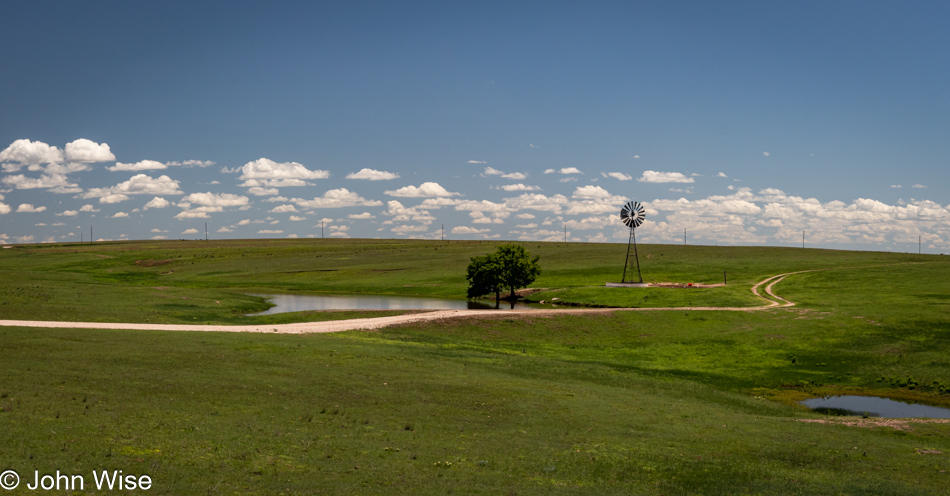
I was reconsidering my focus on mass shootings and aquariums after I hit save while working on this, and my first photo of this day triggered me to ask Google’s Bard about road deaths due to killer fog, and sure enough, on average, fog kills about 100 people per year with 2,000 injured, no small peanuts, huh? Okay, smarty pants, Bard, now show me how this eclipses the total number of mass shooting victims per year here in the Good’ol U.S. of A. Oh, really, that many? I should just leave this out but holy wow. This likely super faulty artificial intelligence operated by Google tries telling me that about 3,600 people a year die in mass shootings and that about 10,000 are injured. It ended its information/disinformation by trying to tell me that for comparison, in the same year, 2021, it was sampling, there was one mass shooting in the United Kingdom that resulted in ZERO deaths.
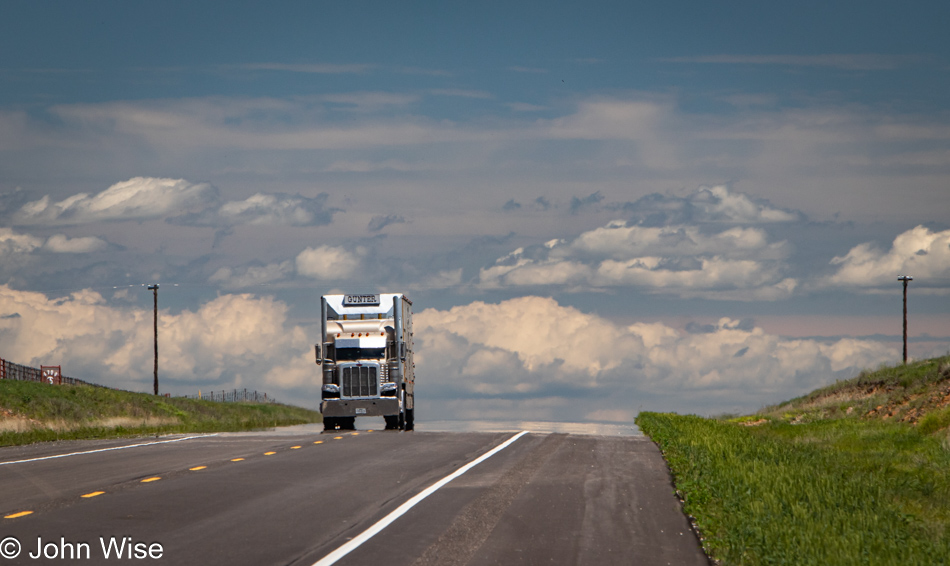
Yo, Mr. Bummer John, how about moving on down the road and returning to the grandeur and bird songs that accompanied your beautiful trip into the middle of America instead of dragging our dirty laundry out onto the highway?
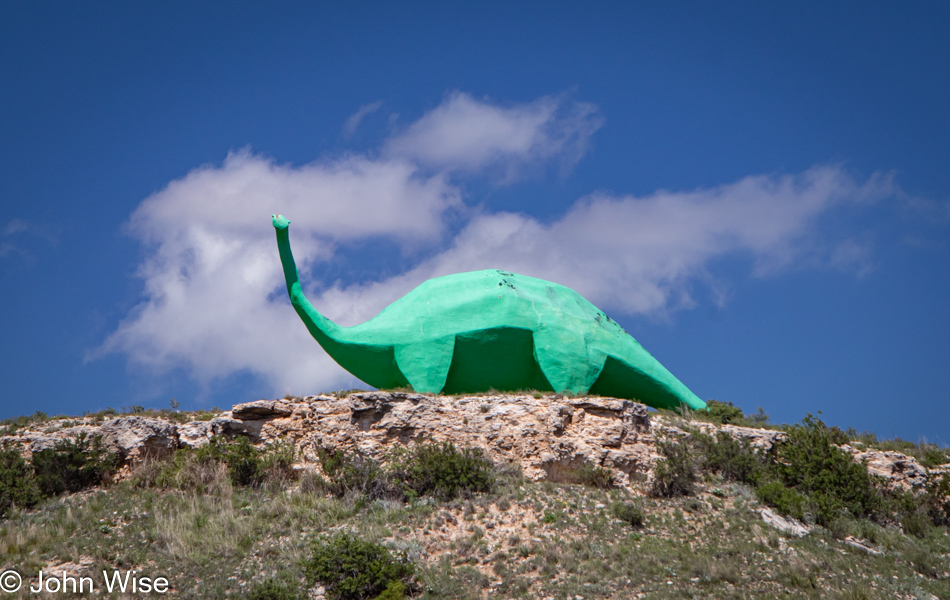
Oh, look, a green dinosaur.
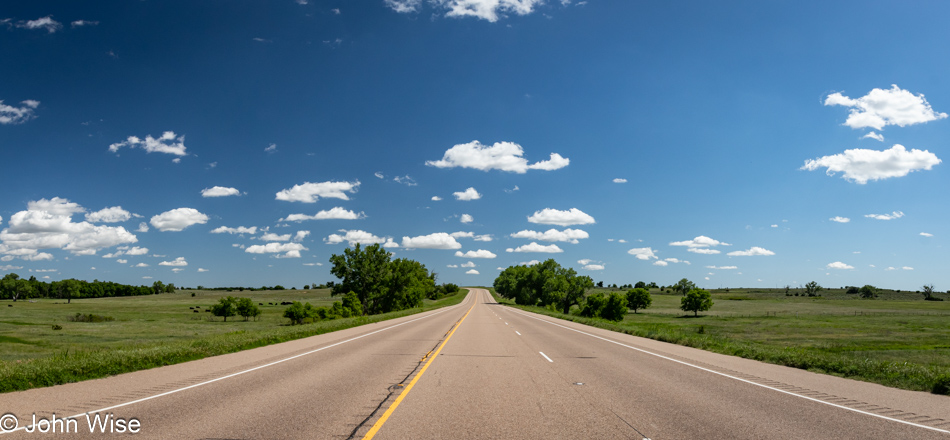
Lucky for us, it is Monday, which means that Cattle Exchange Steak House just behind us in Canadian is closed, or I might have been inclined to devour yet another pound of steak. Instead, we just keep driving down that old Texas highway.

Jeez, Caroline, it looks like you want to go home with this statue of astronaut Alan Bean. Mr. Bean was born right here in Wheeler, Texas, on U.S. Route 83, thus putting this otherwise small town on the map. Speaking of maps, our need to study ours is quickly coming to an end, along with the ability to choose our own pace.

As Porky Pig used to say, “That’s all folks!” We are as far south on U.S. Route 83 as we’ll travel on this trip. The next part of our journey will take us onto Interstate 40 going west, where at 80 mph (130 km/h), we’ll be simply hauling ass with no opportunity to stop and admire anything.

Our bug-splattered windshield becomes the filter through which I photograph our re-entry into New Mexico.

Having emptied our ice chest yesterday, since our breakfast this morning in North Platte, we’ve been surviving on fruit, nuts, and a couple of tortillas until we reached Tucumcari, New Mexico, where La Cita, which we’d seen the other day, beckoned because it looked cool. Was the food cool? Well, the guacamole certainly hit the spot, and the rest was more or less standard Gringo/Mexican fare.
We thought we might make it to Albuquerque this evening, but by the time we reached Santa Rosa, we were finished and needed a break. No, we didn’t return to the stinky motel with the nostalgic Route 66 neon sign and opted for a Super 8 at $95 for the night. While in our room and minutes before we were about to go to sleep, I got the strangest phone call, but details will have to wait for tomorrow’s blog post. Stay tuned.
